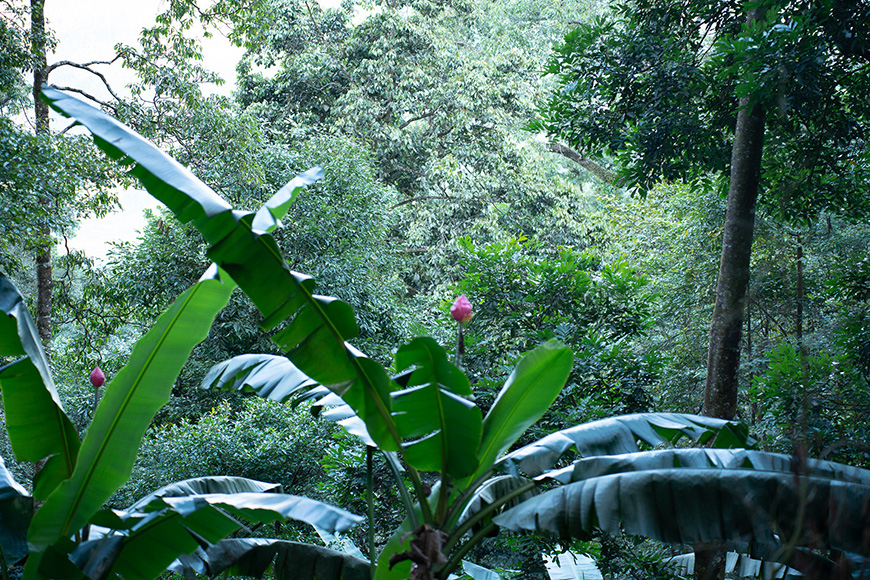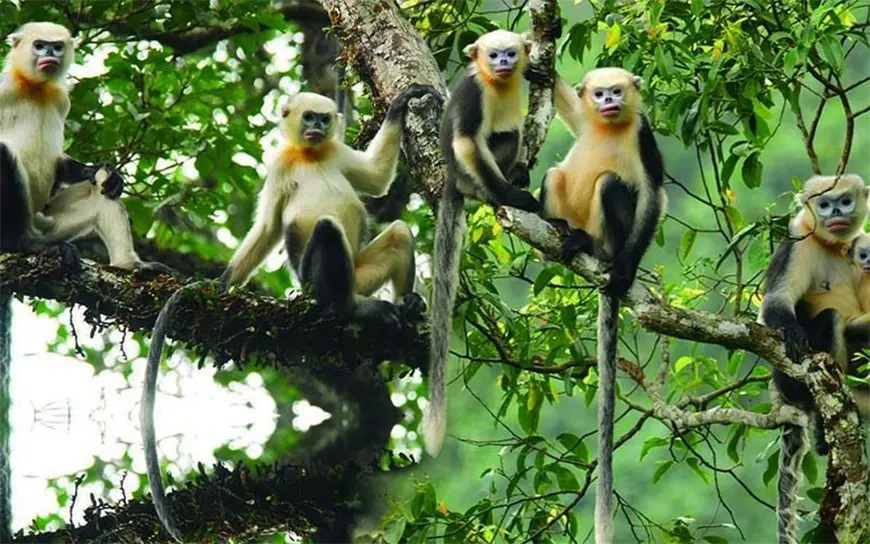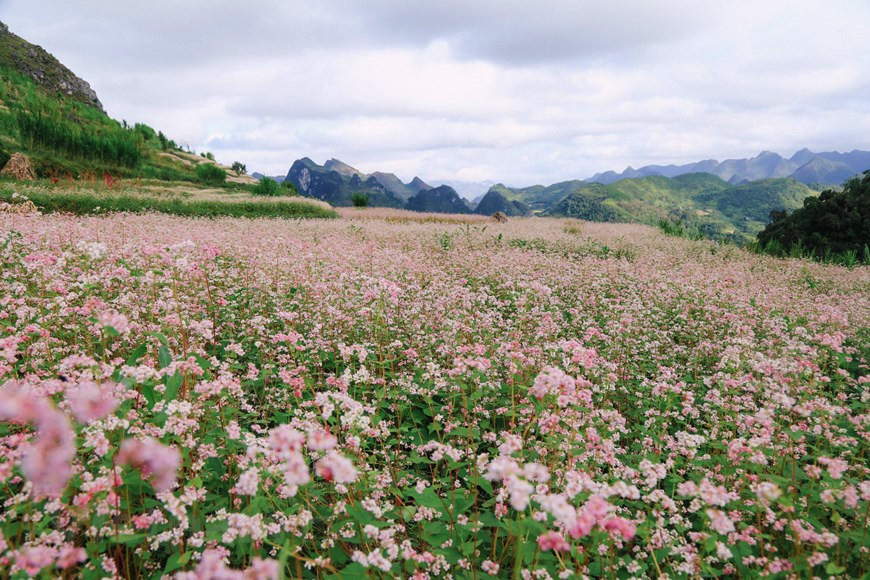Ha Giang, a mountainous province in northern Vietnam, is an exceptional region in terms of biodiversity, recognized as a true paradise for nature lovers thanks to its unique floral and faunal richness.
Its geographical isolation, rugged mountainous terrain, and diverse microclimates have favored the development of
exceptional biodiversity, harboring a multitude of plant and animal species, many of which are endemic or rare.
 Ha Giang is listed in th 34 global biodiversity hotspots - Mr Linh's Adventures
Ha Giang is listed in th 34 global biodiversity hotspots - Mr Linh's AdventuresA global biodiversity hotspot
Located in the northern part of the Hoang Lien Son mountain range, Ha Giang is among the 34 global biodiversity hotspots. This designation highlights the presence of remarkably high biodiversity, including a significant concentration of endemic species found nowhere else, coupled with a high threat from human pressures such as deforestation, urbanization, and intensive agriculture. This "hotspot" concept, highlighted by Norman Myers, reveals that nearly 44% of plant species and 35% of terrestrial vertebrates are confined to only 1.4% of the Earth's surface, areas that are both rich in biodiversity and highly threatened.
Remarkable flora
The vegetation of Ha Giang varies with altitude:
The vegetation of Ha Giang is tiered with altitude, transitioning from cultivated fields and pastures below 800 meters to herbs and woody shrubs between 800 and 950 meters. Above 1,000 meters, dense forests dominate, with trees reaching 30 meters tall and a lush understory of tree ferns, lianas, and rhododendrons. From 2,000 meters upwards, semi-deciduous mixed forests and evergreen cloud forests are found, harboring a diversity of species such as Lauraceae, Ericaceae, Oleaceae, and tree trunks covered in bryophytes. The Ha Giang Geopark, recognized by UNESCO, showcases this botanical richness within spectacular limestone karsts, caves, and waterfalls.
 Tonkin rhinopithecus among the top 25 critically endangered primate species - Vietnam Plus
Tonkin rhinopithecus among the top 25 critically endangered primate species - Vietnam PlusDiverse and rare fauna
Ha Giang is home to approximately 50 species of mammals, 90 species of birds, 16 species of reptiles, and 36 species of amphibians. Notable mammals include the leopard cat, giant flying squirrel, Asian palm civet, and water buffalo. The region also serves as a refuge for threatened species such as the Indochinese tiger, Asiatic black bear, clouded leopard, and the Tonkin snub-nosed monkey, a unique and mysterious primate considered one of the 25 most endangered species in the world, rediscovered in the province after being presumed extinct. Reptiles include impressive species like the king cobra and the iridescent flower snake, while amphibians include rare species like Ziegler's crocodile salamander, endemic to a few Vietnamese provinces. The rivers of Ha Giang are also home to fish such as the Phoenix barb and the Amur goby.
Studies and conservation
Field studies have revealed a high level of phenotypic and genetic diversity among the animal species of the province, particularly in traditional livestock, with variations linked to topography and local ethnic groups. This research supports projects for the protection and enhancement of local genetic resources and the improvement of local incomes. The Du Gia National Park, established in 2015, plays a central role in the protection of these species, notably the Tonkin snub-nosed monkey, over more than 15,000 hectares, a large part of which is under strict protection. In parallel, the UNESCO Dong Van Karst Plateau Global Geopark contributes to the conservation of local biodiversity while promoting sustainable tourism within its spectacular landscapes.
 Buckwheat Flower Season in Ha Giang - Collected
Buckwheat Flower Season in Ha Giang - CollectedHa Giang, an exceptional province for biodiversity
Ha Giang, with its varied ecosystems, rare plant and animal species, and unique geological landscapes, proves to be an exceptional province for biodiversity. Its status as a global hotspot, the presence of the
UNESCO Geopark, and the richness of its fauna and flora make it an essential destination for researchers, ecotourists, and nature enthusiasts.